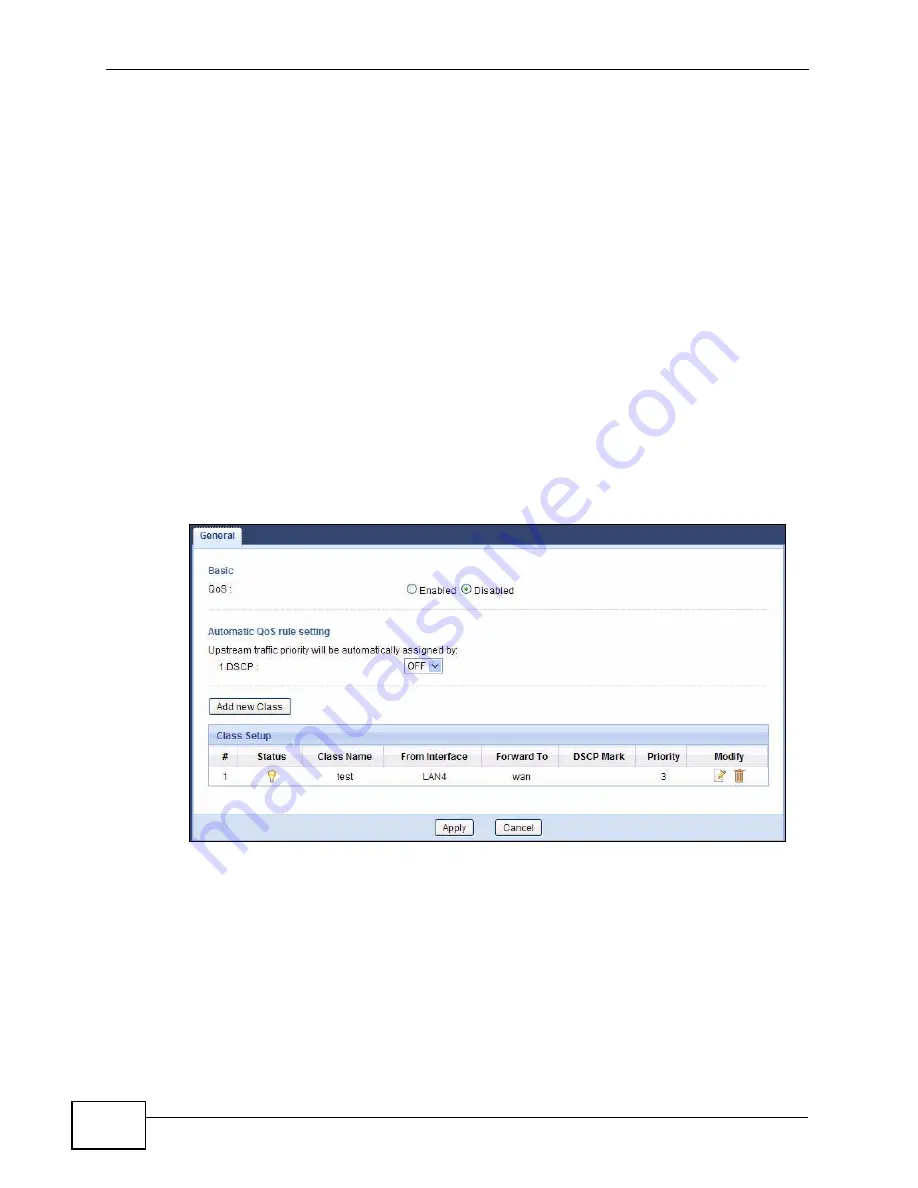
Chapter 11 Quality of Service (QoS)
NVG2053 User’s Guide
132
11.2 The Quality of Service General Screen
Click Configuration > Network > QoS to open the screen as shown next.
Use this screen to enable or disable QoS, set the bandwidth, and select to have
the NVG2053 automatically assign priority to upstream traffic according to the
DSCP value in the packets. See
Section 11.1 on page 131
for more information.
You can also use this screen to add, edit or delete QoS classes. A class groups
traffic into data flows according to specific criteria such as the source address,
destination address, source port number, destination port number or incoming
interface. For example, you can configure a class to select traffic from the same
protocol port (such as Telnet) to form a flow.
You can give different priorities to traffic that the NVG2053 forwards out through a
WAN interface. Give high priority to voice and video to make them run more
smoothly. Similarly, give low priority to many large file downloads so that they do
not reduce the quality of other applications.
Figure 57
QoS General
Summary of Contents for NVG2053
Page 2: ......
Page 8: ...Safety Warnings NVG2053 User s Guide 8...
Page 10: ...Contents Overview NVG2053 User s Guide 10...
Page 18: ...Table of Contents NVG2053 User s Guide 18...
Page 19: ...19 PART I User s Guide...
Page 20: ...20...
Page 26: ...Chapter 1 Getting to Know Your NVG2053 NVG2053 User s Guide 26...
Page 67: ...67 PART II Technical Reference...
Page 68: ...68...
Page 74: ...Chapter 5 Status Screens NVG2053 User s Guide 74...
Page 80: ...Chapter 6 Monitor NVG2053 User s Guide 80...
Page 130: ...Chapter 10 DHCP Server NVG2053 User s Guide 130...
Page 144: ...Chapter 12 Network Address Translation NAT NVG2053 User s Guide 144...
Page 150: ...Chapter 14 Static Route NVG2053 User s Guide 150...
Page 166: ...Chapter 16 Firewall NVG2053 User s Guide 166...
Page 200: ...Chapter 18 USB Service NVG2053 User s Guide 200...






























